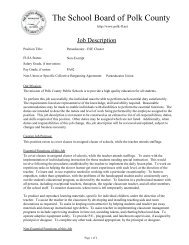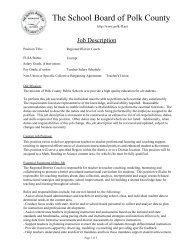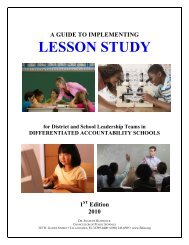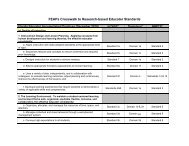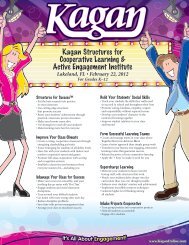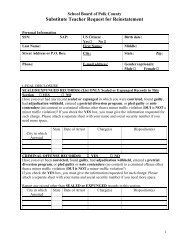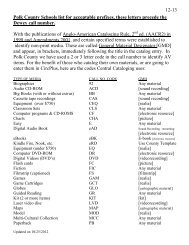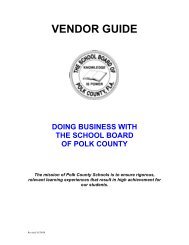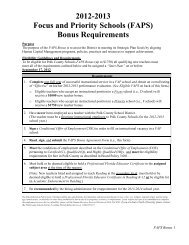Families Building Better Readers - Polk County School District
Families Building Better Readers - Polk County School District
Families Building Better Readers - Polk County School District
You also want an ePaper? Increase the reach of your titles
YUMPU automatically turns print PDFs into web optimized ePapers that Google loves.
Talk is Cheap, and it Works<br />
Goal:<br />
Activity:<br />
Supplies:<br />
Build your child’s knowledge base and<br />
vocabulary through rich conversation.<br />
To be able to read and understand a word in a sentence<br />
it is helpful if a child has heard that word before and has<br />
some notion of what it means. Children most often pick<br />
up words like this through conversations they have had<br />
with adults.<br />
In this activity you will engage your child in<br />
rich conversation.<br />
Topics, events, objects, stories, ideas, feelings to discuss<br />
What to Do...<br />
Spend quality time conversing with your child every day. You can easily do this while you are going about your daily<br />
routines. Try the following strategies:<br />
1. Eat dinner as a family.<br />
Research reveals that children who sit down at the dinner table with their families are better readers than those<br />
that don’t. What’s going on at the dinner table? Conversation. Children who regularly converse with adults are<br />
exposed to tens of thousands of more words per year than those who don’t.<br />
2. When conversing with your child try the following strategies:<br />
• Expand on your child’s statements.<br />
Child says, “Want juice.” You rephrase and respond using more developed sentence structure, “Yes, you would<br />
like to drink some apple juice.”<br />
• Describe what you are doing.<br />
When talking with younger children, think of yourself as Howard Cosell, giving a play-by-play of the activities<br />
you or your child are doing: “You are stacking the blocks. You made a tower. Oh the tower tumbled down!”<br />
• Describe things you see.<br />
Tell what you know/understand: “Look at this tiny roly-poly. See how it balls itself up for protection?”<br />
• Use vivid words for descriptions.<br />
“This sugared candy is tangy but sweet.”<br />
• Expose your child to correct terminology.<br />
“Can you see the antennae on top of this insect’s head?”<br />
“Watch my measuring tape retract when I press this button.”<br />
• Ask questions that require your child to think deeply.<br />
“How do you think a butterfly is like a growing child?”<br />
3. Don’t feel badly if you don’t know all the answers to your child’s questions.<br />
“I’m not sure why rainbows have different colors, let’s find a book to learn more about that together.”<br />
26<br />
F A M I L I E S B U I L D I N G B E T T E R R E A D E R S TM



